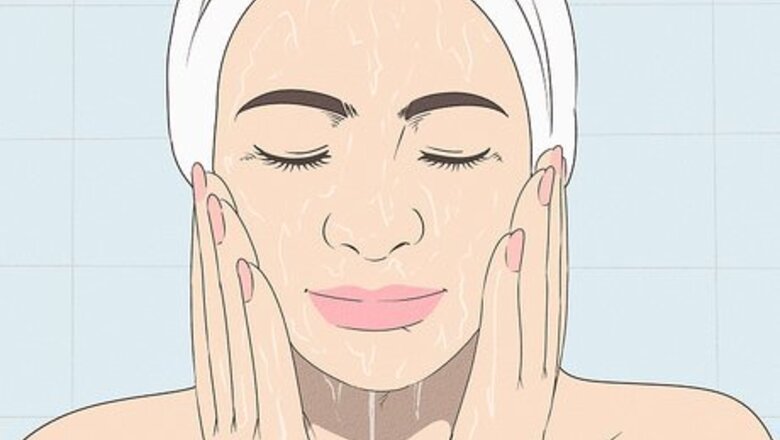
views
Establishing a Skin Care Routine
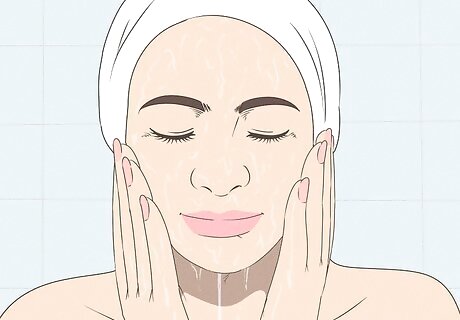
Wash your face at least twice a day. Remove oils and debris from your face every morning and night to get clear, glowing skin. If you work outside or are sweating more than usual, you may want to wash your face more frequently. Use mild, unscented, and dye-free soap and water. Check the ingredients. In most cases, a mild soap is enough to keep your skin free from blemishes and give it a healthy glow. Make sure products don't contain peroxide and alcohol. These ingredients strip protective oils from the skin, leading to dry, uneven complexion. Body washes often contain harsh dyes or fragrances. If you want the aroma therapy experience of using your favorite scented body wash without exposing skin to potentially damaging chemicals, add one teaspoon of the scented body wash to each ounce of wash that is more gentle. You’ll get the clean, moisturized skin you need and the fragrance you want.
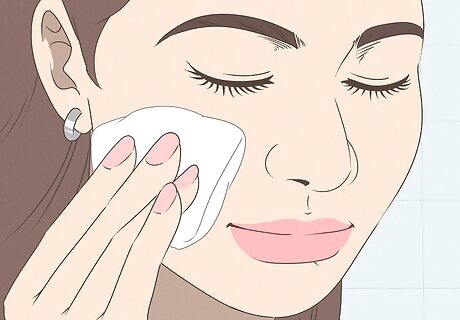
Use a tissue to assess your skin type. An hour after you wash your face, run a tissue over your forehead and the bridge of your nose. If the tissue is oily, you likely have an oily skin type. If the tissue reveals flakes of skin, you likely have dry skin. If you have oily skin, you’ll want to look for products that are light lotions or foams rather than heavier creams and masks because oil on the skin may create a barrier sealing creams or masks onto skin and clogging pores. If you have dry skin, avoid soaps that have alcohol and peroxide, and apply moisturizers more liberally. Alpha hydroxy acids, AHAs, are good for anti-aging and keeping an even skin tone, but they can be drying so patients with dry skin should use them sparingly. Glycolic acid is good for oily skin and lactic acid is good for dry skin. Use a facial treatment with enzymes to smooth and brighten skin tone no matter what your skin type. Vitamin C is also essential to protect and repair both oily and dry skin. Use a product with sulfur once a week to reduce oil on the skin without drying.
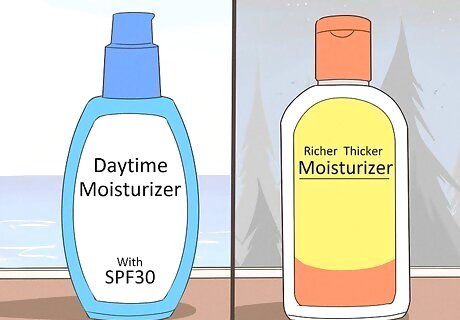
Use different products for day and night. Your skin has different needs according to the time of day. In the morning, you want to prepare your skin for the rest of the day. Start by using a gentle cleanser to soothe your skin. Next, apply toner if that is part of your routine. Most importantly, you want to choose a daytime moisturizer. Ideally, a daytime moisturizer should contain SPF. It should also be light, and should not make your skin feel oily. At night, you want to use a thicker, richer moisturizer. Retinols and peptides are good ingredients to look for, as they can help repair your skin overnight.
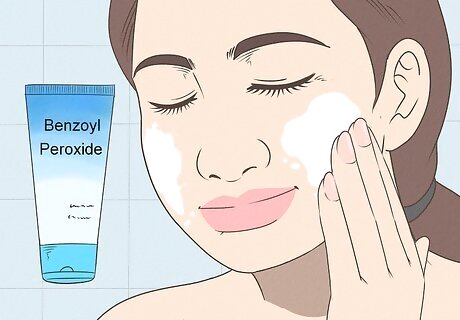
Clear up acne with peroxide and salicylic acid. When celebs get pimples, they may have to put their film shoot on hold, hide from paparazzi, and otherwise worry about ending up on the “celebs without make up” page. Many of these celebrities rely on dermatologists to give them amino acid therapy with light catalyst a few times a year to avoid these breakouts all together. However, professional therapies can cost as much as $4000. Instead, you should consider using a cleanser with benzoyl peroxide or salicylic acid to treat chronic breakouts. They don’t work as quickly, but you’ll start seeing a difference within a few weeks. These products range from ten to fifty dollars.
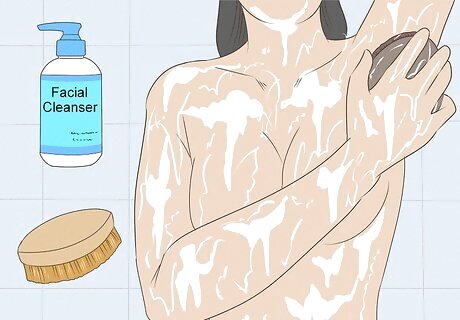
Use a cleansing brush on your whole body. Deep clean into pores and remove dead skin quickly and gently using a soft-bristled brush in combination with a mild facial cleanser. You can find brushes at most beauty stores and pharmacies. You’ve likely heard of using a facial brush, but you may also want to consider dry brushing your skin from head to toe. This removes dead skin, improves circulation, and evens out skin tone.
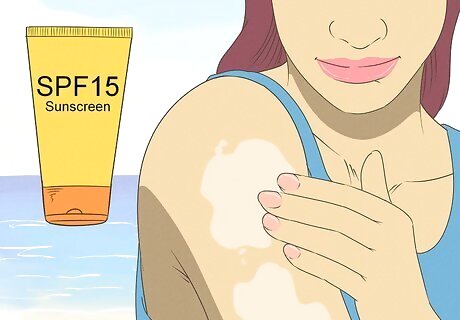
Wear sunscreen everyday. Even if you don’t get sunburns, sunscreen is essential to protect your skin from UV rays, pollutants, and harsh weather conditions. Choose sunscreens that are oil free and at least SPF 15 or higher. Sunscreen typically wears off after three hours, so bring sunscreen with you and reapply often for best results. You may also want to consider a moisturizer and sunscreen combined to simplify your care routine. Consider sunless tanning. A high quality sunless tanning lotion offers a sun-kissed glow without exposing skin to the sun. Additionally, they even out skin tone, block UV rays, and moisturize. You can also consider professional sunless tanning to give the entire body a consistent color and give skin a healthy-looking glow.
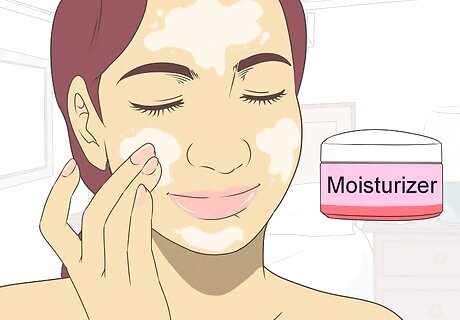
Moisturize throughout the day. Don’t assume one application of sunscreen or moisturizer will keep your skin moisturized and protected all day. Skin that’s exposed to ultraviolet light, smog, rain, wind, and other elements needs to be retreated periodically, and most sunscreens are ineffective after just three hours. Reapply a moisturizer or sunscreen every three to six hours for optimal effect. If you have extra dry skin, consider steaming. You can buy steamers specifically made for facials that cost between $25 and $100, but it’s just as effective to use a boiled pot of water. Bring the water to a fast boil, remove it from heat, and lean over the pot allowing the steam to cover your face for about ten minutes. Pat skin dry and apply moisturizer. Applying moisturizers improves circulation, preventing the loss of collagen that leads to an increased appearance of fine lines and wrinkles. If you have oily skin, look for moisturizers that are specifically made to reduce oiliness, and always choose oil and petroleum free products.
Using Natural Remedies
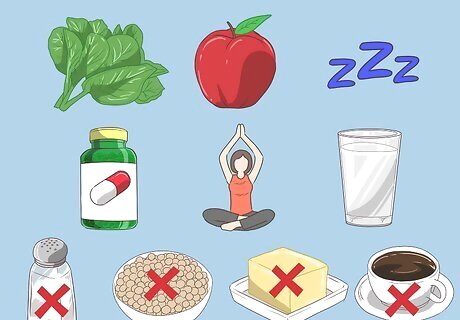
Adopt healthy habits. It's important to lead a healthy lifestyle to keep the skin on your face and body free from blemishes and glowing beautifully. There are a number of daily habits you can adopt to improve your skin and your overall well being. Sleep eight hours a day. Beauty sleep is no joke. During rest, the body heals and rejuvenates itself. Without adequate sleep, your skin cells are unable to repair, and over time, this can result in skin with a dull appearance. Eat fruits and veggies. Not only are these foods good for your health, they also contain vitamins and minerals essential to keeping skin healthy. Choose foods high in vitamins A, C, and E as they help to protect skin and heal damage. Cut out foods with a lot of sugar, grease, and/or oil as they can cause blemishes or give you oily skin. Limit sodium intact as it can cause puffiness and swelling. Be sure to drink water. Water flushes toxins out of the body, hydrates from the inside out, and improves skin’s elasticity. Avoid stressful situations. Relaxation is proven to promote improved whole body health and skin clarity. Going to a spa is a great way to relax and receive great skin treatments all at the same time. Smiling and laughing have been proven to clear skin, and research suggests this is due to the stress relieving effects of laughter. Try to avoid dairy, soy, and coffee since it can trigger adult acne and can increase inflammation.
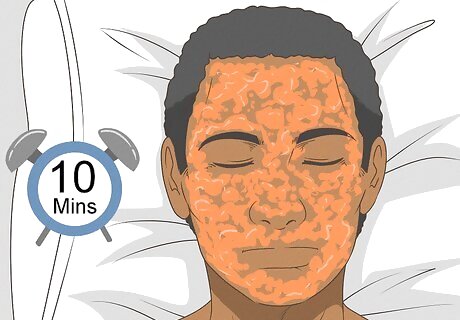
Make a hydrating mask. One of the most enviable aspects of celebrity skin is a fresh, healthy glow. Making a homemade mask is a great way to get those results without breaking the bank. Best of all, many masks can be made by using ingredients you already have! Mix together ½ cup of mashed papaya, 1 teaspoon of honey, and 1 egg white. Apply the mixture to your face. Leave on for approximately 10 minutes. Rinse to find your dull skin looking healthy and bright!
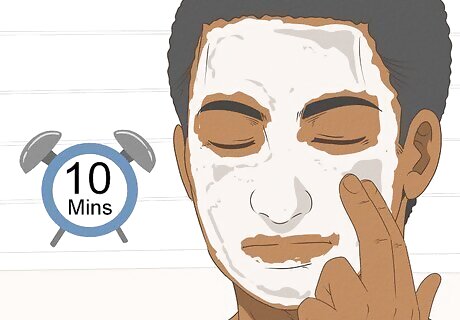
Remove wrinkles naturally. Celebrities spend thousands of dollars on collagen therapy, Botox, and other treatments to reduce the appearance of wrinkles. Many of these professional therapies are now affordable, but you can also achieve similar results by creating your own facial mask that harnesses the power of resveratrol, an antioxidant found in large amounts in red wine. Combine a ¼ cup of red wine, ¼ cup of kaolin clay available at health food stores, 2 tablespoons of grapeseed oil, and one tablespoon of oat flour. Apply the mask for ten minutes, and gently wipe away.
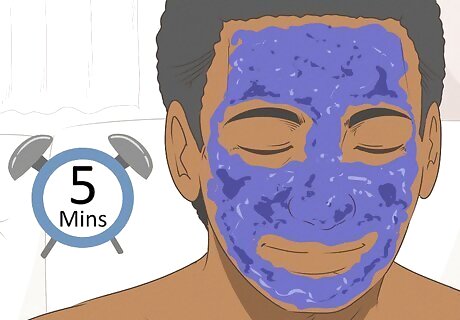
Minimize pores with acai berry. This super food is high in antioxidants and polyphenols that are good for overall health as well as making skin look great. One of their most important uses is as an astringent to shrink pores. You can use acai berry powder or slush combined with sugar and olive oil to create a pore minimizing, exfoliating facial. Combine 2/3 cup of sugar, 2 teaspoons acai powder or slush, 10 whole berries of any kind, and 1 tablespoon of olive oil. Blend to achieve a thick, coarse consistency. Apply to the face for five minutes. Gently clean away with warm water.
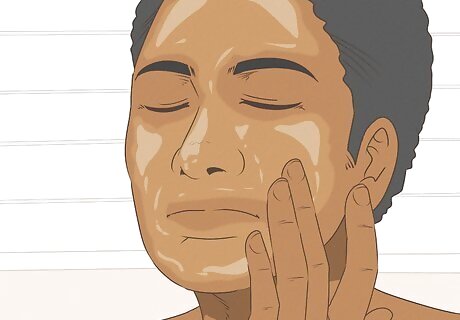
Brighten skin with beer. You can create a simple foaming cleanser using beer that will smooth your complexion leaving you with a healthy glow. Combine ½ a cup of beer, 1 egg white, and 2 teaspoons of lime juice. The B vitamins and yeast in beer mixed with the egg white foams creating a hydrating cleanser that removes dead skin. The vitamin C boost from the lime juice leaves skin looking smooth, bright, and healthy.
Getting Expert Help

Talk to a dermatologist. If you’re ever unsure whether or not a product is right for your skin type or cleansing and moisturizing needs, doctors can give you recommendations and even prescribe treatments to get your skin glowing. Dermatologists may also be able to offer in-office treatments that improve the appearance of skin or help with various skin concerns. Ask your dermatologist for recommendations on products and treatments you can do at home. Make sure your dermatologist walks you through all steps of at-home skin care. Ask the doctor, "What specifically should I do to care for my skin every morning/evening/throughout the day?" Take notes about specific care products. Be open and honest about your budget, so the doctor can make recommendations that fit your needs and are affordable.
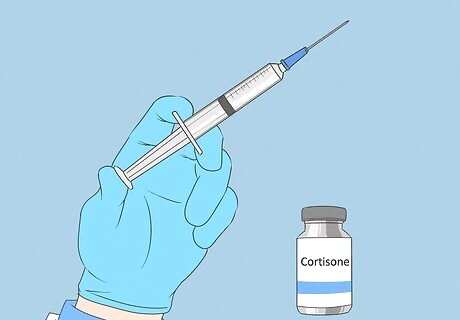
Treat acne with cortisone. Your dermatologist or a professional esthetician can administer injections of this medication. For most people, this almost instantly minimizes the size of pimples, and can be used regularly to clear up acne, bug bites, rashes, eczema, and other chronic skin conditions.
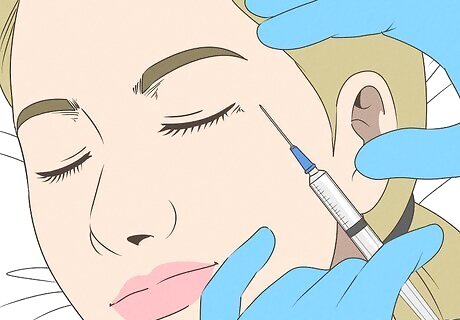
Consider Botox. This is no longer the face-freezing treatment it used to be. You can even ask your dermatologist about “Botox Lite.” This is the placement of small amounts of Botox across the forehead (not just at the creased areas around eyes) that gives the eyes and forehead a smoother overall appearance without the frozen look people dread. Botox treatment cost between $100 and $200, and should be touched up two or three times each year.
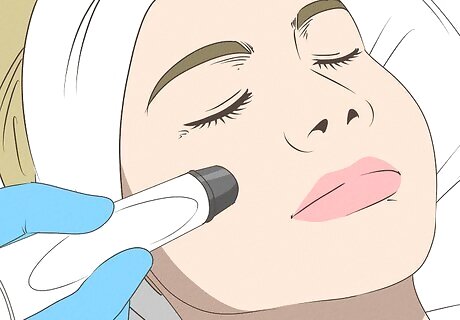
Receive a microdermabrasion. These treatments are fast and comfortable. Great for both oily and dry skin, they use crystals to remove dead and dying skin cells, revealing healthy new skin below. This also allows other products to penetrate more deeply for improved effectiveness. You can get these treatments form a dermatologist or esthetician, but they may cost as much as $400. You can also remove dead skin at home using cleansers with exfoliating beads and skin brushes at least once each week. These products can cost as little as five dollars.
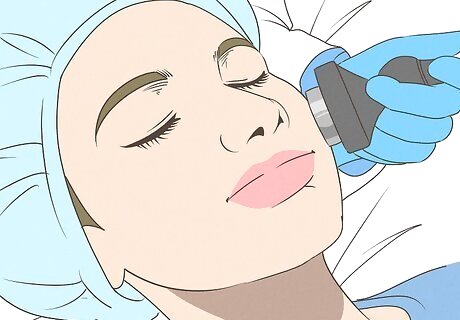
Get a facial. Professional facials remove dead skin, unclog pores, and rejuvenate the appearance of skin tone for a healthy glow. If you’re unable to afford the cost of regular facials with a professional esthetician, you can also do your own facials at home. Check your local beauty store or pharmacy for products that include alpha hydroxy acids and enzymes that typically cost between $20 and $100. These are the ingredients that make professional facials effective. Laser facials can be used to quickly and effectively remove dead skin, heal scars or dark spots, and leave skin flawless. Get a full body facial. These professional masques pull out toxins, remove dead skin cells, and even skin tone. Pulsed light and radio wave facials also offer improved quality and comfort for patients wishing to remove or minimize the appearance of dark spots, varicose veins, and other flaws. Additionally, these treatments pulse the skin flattening, smoothing, and tightening the appearance of face, neck, hands, and other areas. Radio waves can be used to redo the entire surface of the body tightening and smoothing.




















Comments
0 comment